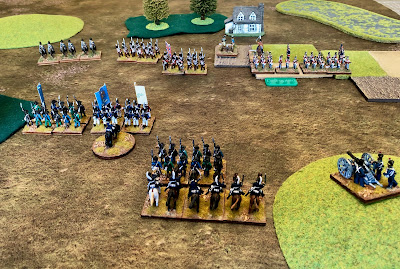This is the latest in the Osprey Essential Histories series covering the war between Britain and the USA in 1812. Having been lucky enough to have visited the Niagara battlefields a few years ago, I am always attracted to books on the subject. This isn't a new book as such. It is an updated and enlarged version of the 2002 Osprey book to reflect more recent research. Osprey do a couple of other books on this war, including Niagara 1814, which was very useful for my trip.
The War of 1812, fought between the United States and Great Britain from 1812 to 1815, stemmed from various grievances, including British impressment of American sailors, trade restrictions, and support for Native American resistance. Early military campaigns saw mixed success for the U.S., with failed invasions of Canada offset by naval victories. The conflict escalated with the burning of Washington, D.C., in 1814 (famously blamed by Trump on Canada!). Despite signing the Treaty of Ghent in December 1814, news of the peace reached the combatants after the Battle of New Orleans in January 1815. The war had a lasting impact on American nationalism, weakening Native American resistance and contributing to westward expansion. The Treaty of Ghent restored pre-war borders but did not address critical issues. The war is often overshadowed by other conflicts but played a vital role in shaping American identity and diplomatic relations.
In this introduction to the conflict, we get an explanation of the causes of the war and the forces available to both sides. The key battleground was Canada, which the U.S. forces invaded in several places. Visitors to Niagara Falls often miss the forts and battlefields that are well preserved. The war was fought on land and sea as the Great Lakes dotted the border. The armies were primarily made up of militia stiffened with units of regulars. The added interest is the inclusion of Native Americans, or the First Nation as they are referred to in Canada, who primarily fought with the British.
The meat of the book is a description of the campaigns. As the British were busy fighting Napoleon, the USA thought the invasion of Canada would be straightforward. There were good reasons for American confidence. British North America’s population was 500,000, compared to 7.7 million in the United States. It didn't turn out that way for various reasons explained in the book.
As expected, the book is profusely illustrated with period pictures and clear maps. This is an excellent campaign for the wargamer as the armies were not large, and the fleet actions can be replayed with rules like Black Seas. The naval actions on the lakes involve smaller ships. I have replayed the land actions using Blucher, Lasalle2 and Rebels & Patriots, after building modest armies in 15mm.
This is an excellent introduction to an often forgotten conflict that has attracted new interest in recent years.



Nice 👏👏 I have small forces for the War of 1812, but they rarely make it onto the tabletop ☹️
ReplyDeleteCheers,
Geoff
Sadly the same for me. But I must make an effort as this is an ideal scale of conflict for the tabletop.
Delete